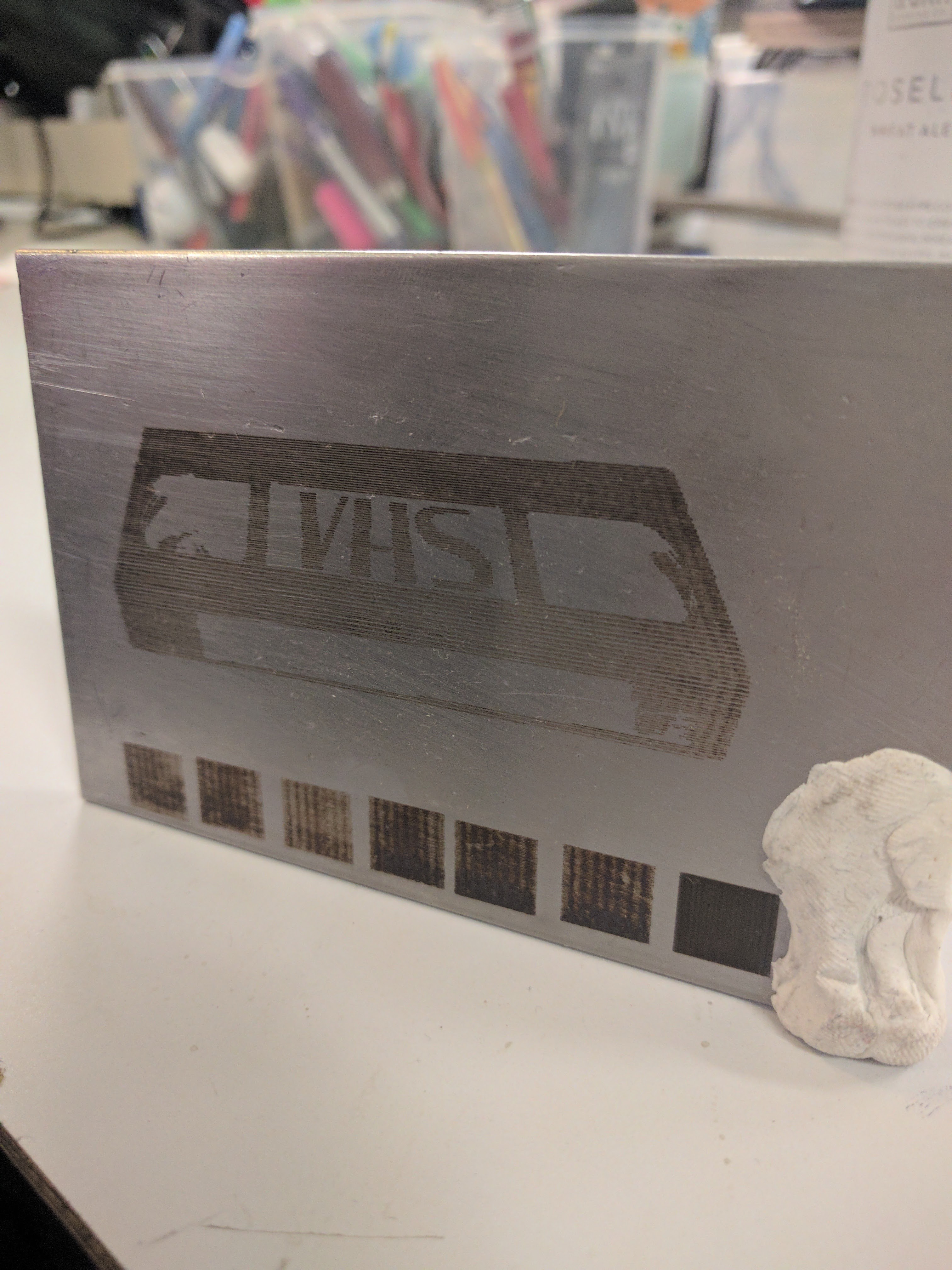The general recommendation if you want to etch or mark metal with a low power CO2 laser cutter is to use TherMark or CerMark. This stuff is pretty crazy expensive.
After seeing a throwaway comment on some blog, it seems that the active ingredient in these compounds is Molybdenum Disulphide, commonly found in dry moly lube. Searching the internet found only this site and some Sawmill Creek forum posts, which are fairly light in specific instructions.
So I tested it, and here is my process:
0. Clean metal of all greases and oxidisation by scrubbing really hard with a scotch-brite pad or similar
1. Spray moly on steel plate
2. Try to evenly spread it
3. The moly is in some sort of suspension, so either let it sit for an hour or more, or hit it with a lighter to burn off all the alcohol
4. Laser!
5. Wash off carefully with ISO alcohol
Success!

As you can see from my test etches on the bottom, more power is better, with a very reasonable coverage and consistency in the bottom right. Unfortunately, it's not possible to see how good the result is until the moly has been washed off.

I originally did this in winter 2015, and haven't come back to it to document as thoroughly as I'd like. I tried with two different kinds of moly lube from my local autoparts store, and the spray on stuff worked way better than the rub on stuff.
This process is pretty robust - I can rub really hard on the marked spot, and it doesn't come off, or feel raised off the metal at all.
Note that this doesn't work well on aluminum, as far as I've been able to test. The thermal conductivity is way higher, so the metal wicks away the heat before the moly can fuse. That's my theory, anyway. I have not tested this with thin aluminum sheet. Assuming my hypothesis is correct, it should work.
 Jarrett
Jarrett
Discussions
Become a Hackaday.io Member
Create an account to leave a comment. Already have an account? Log In.